How to Prevent Flooding in Your Home: 4 Leak-Proofing Tips
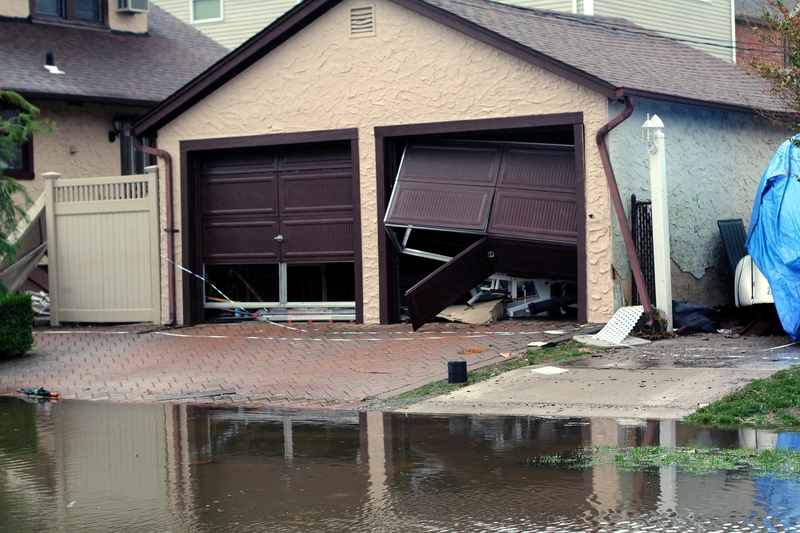 Keeping water out of your home is not always easy. Water can find its way through in more ways than one – from roof leaks, through plumbing problems, to little cracks in the foundations or gaps in doors and windows. You may not see any danger in a few drops here and there, in some moisture or water spots on the walls, but they can quickly escalate into more serious water damage or even home floods. Therefore, in order to prevent flooding and major water damages in your home, it is important to efficiently leak proof it. There are four main aspects of your home that you should focus on, so keep reading to find out what they are and what you can do take proper care of your house.
Keeping water out of your home is not always easy. Water can find its way through in more ways than one – from roof leaks, through plumbing problems, to little cracks in the foundations or gaps in doors and windows. You may not see any danger in a few drops here and there, in some moisture or water spots on the walls, but they can quickly escalate into more serious water damage or even home floods. Therefore, in order to prevent flooding and major water damages in your home, it is important to efficiently leak proof it. There are four main aspects of your home that you should focus on, so keep reading to find out what they are and what you can do take proper care of your house.
1. Leak-Proof All Parts of Your Roof
A damaged roof can lead to very dangerous leaks and some serious water damages.
Take some time to carefully inspect it and schedule any necessary repairs that need to be done. This can be done throughout the year, but it’s always recommended to do it before winter, snow, and generally bad weather.
There are several aspects of the roof to direct your attention to: shingles (or tiles, depending on the type of roof), chimney, gutters, and attic.
Shingles
Broken, curling, buckling, cupping or missing shingles all point to roof damage that needs to be repaired as soon as possible.
These problems with shingles can lead to smaller roof leaks, which can develop into bigger ones and cause devastating water damages to your home. If caught early on, however, they can be successfully resolved.
Tighten any loose shingles or tiles, replace the broken ones, and add the missing ones.
Chimney
Make sure to inspect and repair your chimney, paying attention to the flashing.
The flashing around your chimney is one of the most often leak sources, so you need to make sure it is tightly fitted and that there are no cracks or missing parts. If the entire flashing is in a generally bad state, think about replacing it with a more durable, quality one.
Additionally, make sure to put a cap on the chimney.
Gutters
Gutters are an indispensable part of your roofing system, in charge of proper water drainage.
The main purpose of gutters and downspouts is to direct the water off of your roof and away from your house, away from all the structures vulnerable to water damage.
When they are not functioning properly, i.e. when they are clogged or damaged, water starts pooling in them, spills over the edges, and runs down the walls, flooding your foundations, basement or the inside of your home.
Check your gutters every once in a while, especially after storms, and clear out all the debris and dirt that has piled up, such as leaves and branches. Wash them out with a garden hose and check that the water is draining properly.
If there are any loose, damaged or rusty parts, repair or replace them.
Attic
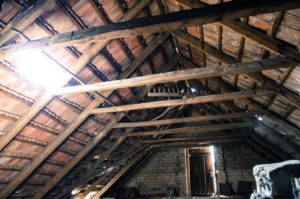 Proper attic ventilation and insulation help maintain optimal indoor temperatures in your home and, with it, prevent moisture buildup inside your home, which minimizes the risk of leaks and water damage.
Proper attic ventilation and insulation help maintain optimal indoor temperatures in your home and, with it, prevent moisture buildup inside your home, which minimizes the risk of leaks and water damage.
An additional benefit is that it will also increase the energy efficiency of your home, lowering your utility bills. Therefore, make sure you have quality and functioning ventilation and insulation in the attic and if not, add them.
2. Waterproof the Foundations
Any damages and cracks in the foundations can potentially be very dangerous, as raindrops can find their way in through the smallest of cracks.
They can lead to disastrous basement flooding and other types of water damage, so in order to prevent that, here is how you can waterproof your foundations:
Repair Any Cracks
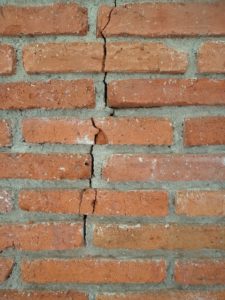 Inspect your foundation walls for any minor or greater cracks and make sure to address them on time.
Inspect your foundation walls for any minor or greater cracks and make sure to address them on time.
It is recommended to do this during summer or spring, when there is no rain or snow, so that you have time to repair them.
For minor cracks, you can use caulk to seal them and for the bigger ones, you can use hydraulic cement.
If you don’t feel comfortable doing this on your own, you can always call in a professional.
Steer Water Away from the Foundations
After you’ve dealt with the cracks, make sure that there is no way for the water to get into the foundations.
You can do this by creating slopes on the grade around your house – add a few inches of topsoil, crushed stone or something similar around the foundations and the water will have a hard time reaching them, it will simply drain away.
3. Inspect and Protect the Pipes
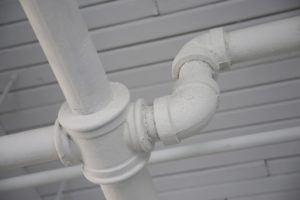 Burst and leaking pipes are every homeowner’s nightmare, so in order to prevent that and the subsequent damages and costly repairs, it is important to take proper care of your plumbing system.
Burst and leaking pipes are every homeowner’s nightmare, so in order to prevent that and the subsequent damages and costly repairs, it is important to take proper care of your plumbing system.
Inspect your pipes, as well as valves, for any signs of leaks and replace all rusty and damaged ones.
Apart from that, it is very important to properly protect them during winter, as that is when they are at a higher risk of freezing and bursting. Here is how:
- Before winter, make sure to disconnect your garden hose from the outdoor faucet or water valve and if your downspouts are connected to the sewer system, it is best to disconnect them as well in order to prevent wastewater back-up.
- You can use heat tape to wrap your pipes or even add a layer of insulation, which will help reduce the risk of them freezing or bursting.
- When the temperatures outside are below zero, you can let warm water run from several faucets in order to prevent the pipes from freezing.
- If you are going away for a few days, make sure to turn off the main water supply and to keep the pipes warm enough by putting heat tape on them and leaving the heat on low.
4. Seal Your Windows and Doors
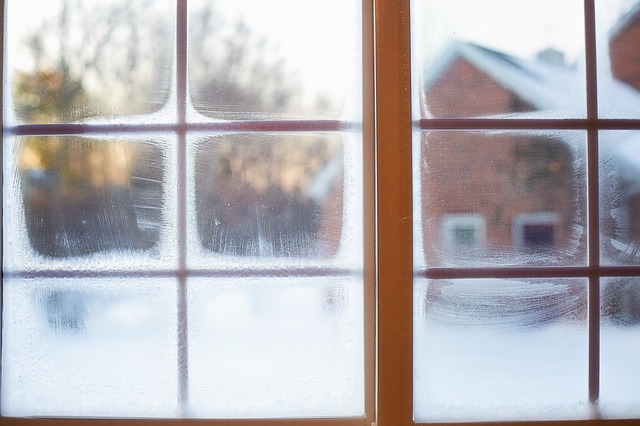 If your doors and windows are not properly and tightly fitted, you are at risk of snow and rain getting inside your home, especially if the winds are also blowing strong against your home.
If your doors and windows are not properly and tightly fitted, you are at risk of snow and rain getting inside your home, especially if the winds are also blowing strong against your home.
It is not necessary to emphasize that rain and snow are not welcome guests in any home as they usually cause great water damages.
To seal your windows and doors properly, you should use weather stripping on all gaps around them and on whichever ones that don’t close tightly enough.
Apart from that, you can use caulk to seal the sides of your windows and prevent rainwater from seeping in.
This leak-proofing step will not only prevent leaks and water damage, but it will also help with your energy efficiency. It will make your home warmer by keeping the cold air out and, therefore, reduce your heating needs and costs.
Call a Professional
The need, as well as the efficiency of the above-explained methods, will depend on each home individually, its structural stability, the quality of construction work, the present condition of the plumbing system, as well as on the level on maintenance, but they will surely save you a lot of trouble and damages.
If, on the other hand, your efforts are not producing results and you are still experiencing, leaks and water damages, don’t hesitate to call in a water damage restoration specialist.
They will expertly and efficiently deal with the problem, as well as restore all the water damage done to your property and give you some helpful tips on what to in the future.